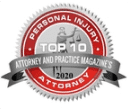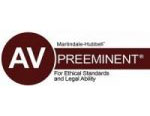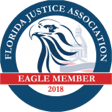On today’s Inside Look by Brooks, Steve Brooks talks about what you should do at the scene of an accident.
Find us on:
- Facebook: https://www.facebook.com/brookslawgroup/
- YouTube: https://www.youtube.com/BrooksLawGroup
- Twitter: https://twitter.com/_brookslawgroup
Introduction
Welcome to Inside Look by Brooks. My name is Steve Brooks. Today’s topic is “What do you do when you’re in an accident and you’re waiting for the police to show up?” I find that a lot of people come in to see us after they’ve experience an accident on a local highway or road and we start asking “Did you take pictures of the scene?” “Have you taken pictures of the car?” and they kind of look down and say “No, I was traumatized by the accident.” I get that, so what I’m telling you today is kind of my fantasy land wish list you would do if you were involved in an accident.
Taking Pictures – Be Safe
If you’re involved in an accident, you want to make sure that you’re away from the road, so when you start taking pictures you aren’t going to get hit or hurt worse than you already are. Make sure you’re safe before you start taking pictures. Your phone is going to be your best friend at an accident scene. Your phone and your camera are going to record all the things I could never reproduce at that moment in time when that accident happened. That evidence can be invaluable. So, take pictures of the roadway showing any skid marks and try to get several pictures of the intersection from different angles.
Should I Wait For A Police Officer?
Here’s another good one: always try to get pictures of the other car that was involved in the accident, including the license tag. A lot of times when you call the police, you think the police is going to show up and put the information on the report and you’ll be able to have the information in the future. Well, a lot of times the police get busy and get a more important emergency call – an elevated call. It could be hours before they come and sometimes people mutually agree that because the accident wasn’t serious enough, no one went to the hospital, to actually leave the accident scene before the police arrive. I never recommend that. You always want to wait for the police, but things do happen. We had an accident that came into our law firm this week where they didn’t wait for the police and now we’re looking for the defendant and cannot find the person who caused this accident.
Taking Pictures Of The Damages
So, pictures of the road, pictures of the scene itself from several different angles, pictures of the car that caused the accident and their tag number, and then if you can get pictures of the damages to not only your car, but the other car. Pictures of the damages can be important because sometimes we have a problem finding where the defendant, or at-fault party, repaired their car. Sometimes they choose to receive the money from the insurance company and not repair it, so we don’t have any idea what the repairs are and we can’t get pictures. So, pictures of damages to both vehicles, the scene, the roadway.
Witnesses
Here’s another one: witnesses disappear. There are witnesses to accidents who come up and say “Are you okay? I saw what happened?” that don’t stick around until the police come, so try to get them to pull out their license, get a picture of their license in case you need to contact them in the future, get their phone number. Try to get their version of the facts. So, scene, roadways, the cars, the tag numbers, and witness information. Also, if any signs were knocked down, try to get pictures of that. We also want to have pictures so we know what the weather was at that time, if it was wet or slippery for some reason.
Never Admit Fault
And then, make sure when you talk to the police that you never admit fault. A lot of people will assume they were 100% at-fault, when in reality the other side had a lot to do with the accident. A lot of times, we’ve had clients come in and say “Well, it’s my fault. I ran the stop sign.” Well, did you really run the stop sign, or did you stop and then go and because the car coming the other way was speeding, there was a collision and you misjudged the speed of the car, so you may have been a little at-fault by stopping and then going when there was on-coming traffic, but the other car is at-fault, too because they were speeding. In other words, you both caused the accident. Florida is a comparative negligence state, so we can argue and the insurance company can argue that… we can argue that their insured was 50, 60, or 70% at-fault and they can argue the same thing about you and usually we settle somewhere in the middle. If you admit 100% at-fault, the police officer may not even go so far as to get detailed and granular the nuances of what caused that accident. So, be careful about admitting fault, not only to the police officer, but to the other drive. Be kind, be nice, but don’t admit fault.
Your Legal Obligation To Insurance Companies
The other thing, sometimes an insurance company will show up at the scene while you’re waiting for a police officer and will say “Do you mind if I get a recorded statement from you?” You don’t want to do that. I’d rather you say, I want to wait and talk to my lawyer before I do that. You are contractually bound by your insurance company in most cases to cooperate and give a statement to your insurance company. You have no contractual obligation with that at-fault party’s insurance company to give them any kind of statement, recorded or not. So, let your lawyers make your decision because you do not want that to come back and haunt you.
Conclusion
So, those are my tips on what to do at the scene of an accident. Thank you for joining me today. We look forward to seeing you next Friday at 3:00 for Friday’s Inside Look by Brooks. If you have any questions, feel free to shoot me an email: [email protected]. I’ll be glad to get back with and see if I can help you. Thank you for joining me.













